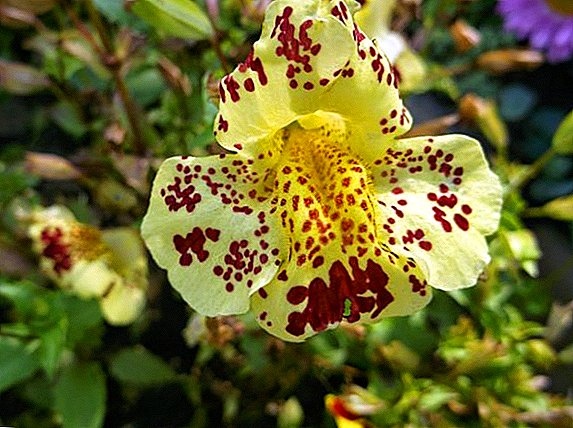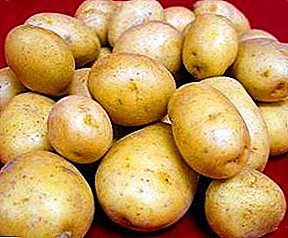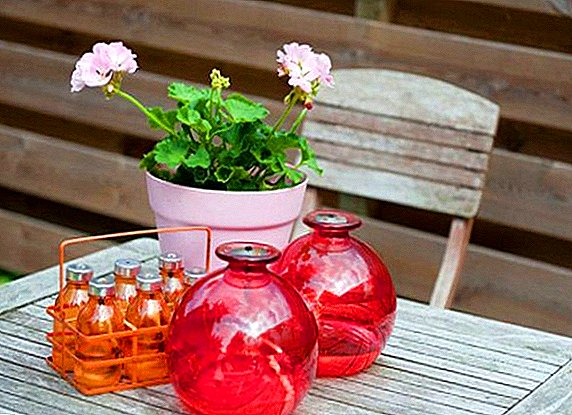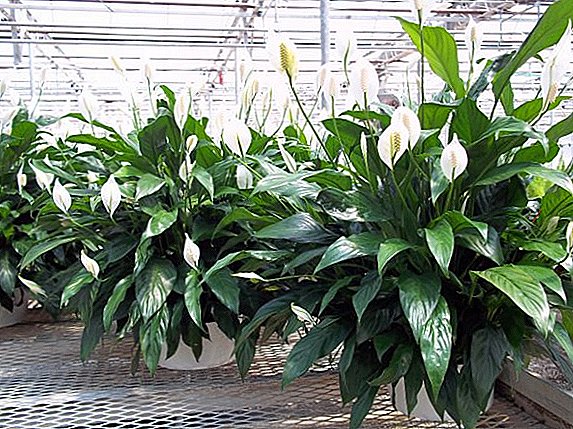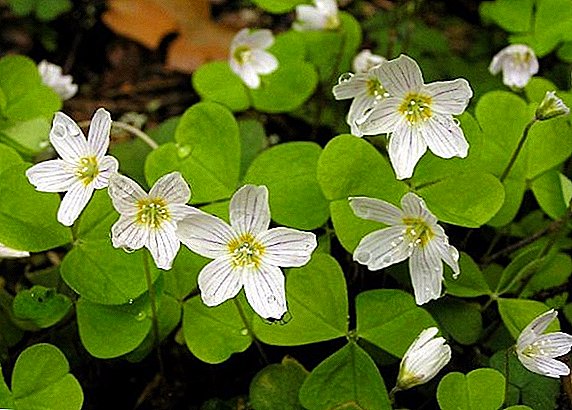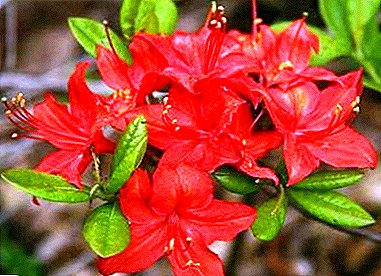
Azalea (rhododendron) - surprisingly beautifully flowering deciduous or evergreen shrub from the heather family. This is a very rich family - heather, wild rosemary, azalea, rhododendron ... Only in Russia grows 18 species of rhododendron (Rhododendron - from the Greek. Rose tree) - in the Caucasus, in Siberia, in the Far East. Our story about most healing properties of Roddendron.
Rhododendron - medicinal properties and contraindications

At the word "rhododendron" the most fascinating, the most "postcard" view of the mountains arises in the head - the violent flowering of soft pink bushes against the background of ice-shining peaks. Dead or alive - you will throw everything and rush off to the place where the “mountains in the clouds sleep”! Will it come to mind to use such unearthly beauty?
Those who have been to the resorts of the Caucasus - Dombai, Elbrus region - surely know that in the local markets at the foot of the mountain bags of dried rhododendron leaves, clumsily signed, are laid out here and there “from pressure”, “from heart”, “from insomnia”, “from joints”, “from throat”, “from headache”, “from cough”, “from asthma”, “from radiculitis”… "And it's all about him"? - you ask. Yes, about him, and these semi-literate inscriptions are quite an authoritative source, because the recipes of traditional medicine have been tested for years and even centuries.
Later, chemists and physicians will find in this anciently fascinating beauty of the plant various useful as well as toxic substances that will confirm its healing properties - tonic, bactericidal, antipyretic, diuretic, anti-inflammatory, anti-asthmatic and even insecticidal (from moth, for example).
 Active ingredients: leaves contain rhododendrin, tannins, arbutin, rutin, gallic acid, ascorbic acid, tannins, phytoncides, essential oil, and andromedotoxin (rhodotoxin)whose name itself indicates that it is poison.
Active ingredients: leaves contain rhododendrin, tannins, arbutin, rutin, gallic acid, ascorbic acid, tannins, phytoncides, essential oil, and andromedotoxin (rhodotoxin)whose name itself indicates that it is poison.
Homeopathswho adore treating poisons, and generally more attentive to the healing properties of plants, of course, could not pass by such a well of health.
Rhododendron preparations obtained from the species Rhododendron Golden (Rhododendron aureum) have long been widely used in homeopathy for the treatment of diseases musculoskeletal, toothache, herpes, diseases of the female and male genitalia, meteozavisimosti, eczema, as well as mercury poisoning.
It is noticed that Circassians living in the mountains of the Caucasus, it can be said, in the thickets of rhododendron and from childhood accustomed to drink tea from its leaves, to a very old age retain amazing vigor and activity, which perfectly illustrates the high adaptogenic and biostimulating properties rhododendron. One of the variants of this wonderful tea is with milk, salt, butter and black pepper. And in Siberia, it is customary to drink an infusion of rhododendron with intestinal disorders, due to the high content of binders - tannins.
 Known effect of rhododendron on cardiovascular system like cardiotonics, they normalize the work of the heart, have a pronounced hypotensive and diuretic action.
Known effect of rhododendron on cardiovascular system like cardiotonics, they normalize the work of the heart, have a pronounced hypotensive and diuretic action.
Anti-inflammatory and analgesic effect of rhododendron in traditional medicine is used for rheumatism, gout, arthritis, osteochondrosis, headache. The soothing properties of rhododendron are also strong, even the ancient healers treated them insomnia, irritability, nervousness, irritability and even epilepsy.
It has been established that preparations from leaves and flowers of rhododendron are active against streptococci and staphylococci, shigella, salmonella, pseudomonas and diphtheria sticks and other types of pathogenic flora.
Use these properties as when ingestion in the form of decoctions and tinctures for the treatment infections of the upper respiratory tract and intestines, and outwardly in the form of gargles and lotions inflammation in the throat, pustular skin diseases.
Contraindications: pregnancy, lactation, urolithiasis.
 In the repeatedly described story of the mass poisoning of Greek warriors in the march on ancient Colchis refers to honey collected from rhododendron flowers. After eating honey, the Greeks seemed to get drunk and then "turned off" for two days, but no one died. Later, Pliny pointed out that this was a typical narcotic poisoning with honey collected from Azalea yellow flowers (Rhododendron luteum), also known as Pontic Azalea (Rhododendron pontica). And it should be noted that heather honey, the secret of which was never given medovars from the famous ballad, was collected from a representative of the family to which rhododendron belongs.
In the repeatedly described story of the mass poisoning of Greek warriors in the march on ancient Colchis refers to honey collected from rhododendron flowers. After eating honey, the Greeks seemed to get drunk and then "turned off" for two days, but no one died. Later, Pliny pointed out that this was a typical narcotic poisoning with honey collected from Azalea yellow flowers (Rhododendron luteum), also known as Pontic Azalea (Rhododendron pontica). And it should be noted that heather honey, the secret of which was never given medovars from the famous ballad, was collected from a representative of the family to which rhododendron belongs.
Yellow azalea in the wild grows abundantly in the mountainous Colchian forests to this day (in the region of Abkhazia and Greater Sochi). Its bright yellow flowers have a strong stupefying scent, very similar to the smell of lilies.
All parts of the plant contain toxins.
Aborigines will tell you a lot of tales about "crazy honey", poisonous even for bees.
All types of azaleas are poisonous to a greater or lesser degree, therefore, it is necessary to use a prudent approach to the use of rhododendron for medicinal purposes, to do it strictly dosed and only after consulting a doctor. Azaleas can be kept at home in a pot, but, of course, don't give it a try to the tooth of curious children, cats and other pets. Although it has been observed that azalea (rhododendron) is particularly toxic for cattle, small domestic “cattle” should also be kept.
A photo
Photos of rhododendron, see below:




Useful information
Read more about azaleas:
- Azalea: rules and conditions of the plant
- Blooming Azalea - a magnificent bouquet in a flower pot!
- Why is azalea sick? How to eliminate pests?
- Ways to grow azaleas at home: growing rhododendroma
- Beauty in your home! How to dilute the hydrangea room at home?


